After spending time with the Google Pixel 9A, I can confidently say that the phone feels like a well-considered balance of value, performance, and longevity. That comes as no surprise to me, though, because I’ve long felt that the A-series of phones is the perfect device for most people.
Google has made some deliberate choices here for 2025, some of which feel familiar in the A-series lineup, and others that push it into more polished territory. For $499, it’s not trying to be flashy. It’s trying to be smart. As it turns out, Google mostly succeeds.
The Pixel 9A strips away the gimmicks and gives you what actually matters: great photos, smart software, and a user experience that just works.
Unboxing and Setup: Getting Started
The Pixel 9A arrives in a slim, minimalist box that reflects Google’s continued commitment to sustainability. Inside, you’ll find just the essentials: the phone itself, a 1-meter USB-C to USB-C cable (USB 2.0), and a SIM ejector tool. No charging brick, which is par for the course these days. The packaging is fully plastic-free and easy to recycle, and it gives off a no-nonsense vibe that I actually appreciate.
By now most of us have a preferred charging block and cable, portable charger, or multiple-device charger. If you’re still sitting on an old cable and charger from a few years back, though, do yourself a favor and upgrade.
If you’re coming from another Pixel or a recent Android phone, setup is a breeze. The phone boots into Android 15 and walks you through a guided onboarding process that transfers your apps, contacts, and settings with minimal fuss. It’s one of the smoothest transitions you can ask for, and there’s no clutter or pre-installed junk to deal with. It’s all clean, fast, and focused on getting you up and running quickly.
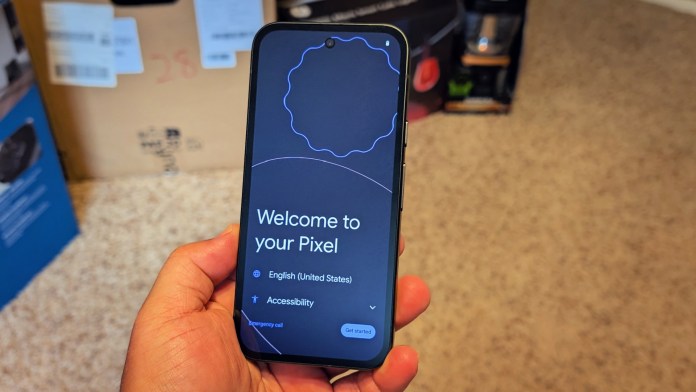
Google has done a great job of making upgrades and device switches pretty seamless over the last couple of generations. And given that many users have already spent time with at least one other smartphone, the learning curve here is almost a flat line.
Design and Build: Refined, but Familiar
This year’s design marks a shift. Gone is the distinctive camera bar that defined recent Pixel generations. In its place is a more traditional, pill-shaped camera cutout that blends more easily into the back panel. It’s less iconic, sure, but the result is a cleaner, more modern look that feels less polarizing.
I’ve gotta admit, though, I do love how easy it is to identify a Pixel phone in the wild. They’re getting more popular with each generation so it’s nice to see that stripe. With that said, maybe Google understands things quite well and feels like the time is right for a design change.
The overall shape has changed too. The 9A has flatter sides, slightly squared corners, and a slim profile that makes it feel great in the hand. At just under 186 grams, it’s lightweight without feeling insubstantial. It fits into my pockets more easily and doesn’t rock on a table when set down thanks to the flush camera housing.
I don’t have big hands so I appreciate it quite a bit when I get to spend time with an A-series phone. They’re often thinner and easier to hold in one hand and that’s certainly the case here.
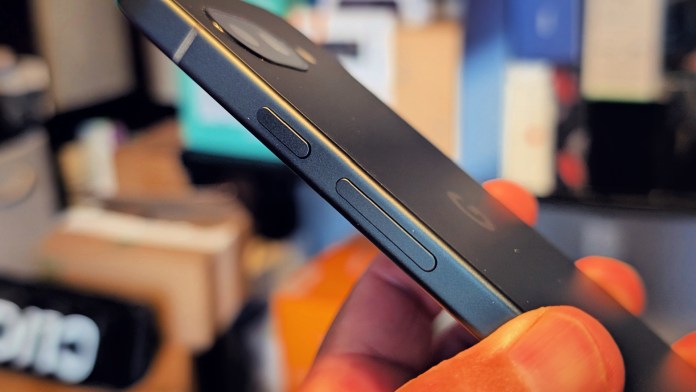
Materials-wise, you’re getting a matte-finished composite back with a recycled aluminum frame. It’s not trying to be flashy, but it still feels well-made and thoughtfully constructed. There’s even a fingerprint-resistant coating, which helps keep smudges to a minimum. And we can’t overlook the IP68 rating, or take it for granted. That’s a level of durability that used to be reserved for premium flagships, and now we get it as part of the mid-range.
Display: Brighter, Bigger, and Smoother
The 6.3-inch OLED panel is one of the more noticeable upgrades this year. It’s larger than what we got on the 8a, and it finally supports a 120Hz refresh rate. Once you use a high-refresh display, it’s hard to go back. Even if you’re accustomed to a 90Hz screen the change is noticeable. Scrolling feels silky smooth, animations are generally more fluid, and it helps the entire user experience feel more polished.
Brightness is another win here. The Pixel 9A can hit up to 2,700 nits under certain conditions, which means it holds up surprisingly well in direct sunlight. I’ve tested it during bright afternoon walks, next to windows with my morning coffee, and on the patio in early evening. I have had no issues reading maps or notifications, and I can’t really use the excuse that “I can’t really ready my email out here.” HDR video looks especially good, with deep contrast and vibrant colors.
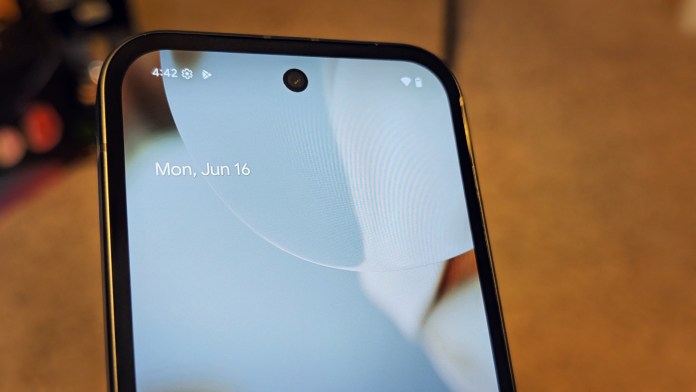
The downside? Bezels. They’re still fairly noticeable, especially compared to some of the competition. If you don’t spend a lot of time comparing to other devices, or aren’t trying to be critical of things, I bet the average person doesn’t even notice this type of thing.
While the screen is decent, it’s protected by Gorilla Glass 3, which is an older standard that just doesn’t sound, or feel, quite up to snuff in 2025. It’s a clear area where Google saved a few bucks; I’d highly recommend picking up a screen protector just to be safe.
Performance: Tensor G4, With a Catch
At the heart of the Pixel 9A is the same Tensor G4 chip you’ll find in the flagship Pixel 9 and 9 Pro. That’s a pretty big deal for a mid-range device, and it gives the 9A a noticeable edge in day-to-day performance. Paired with 8GB of RAM, the phone flies through typical tasks like messaging, browsing, and media consumption.
As someone who has sold and used smartphones for two decades now, I cannot help but feel like today’s consumers have no idea just how good they have it. Seriously, there’s so much phone at this price.
Apps open quickly, multitasking is smooth, and there’s enough headroom to handle some casual gaming. Titles like Alto’s Odyssey and Asphalt 9 ran just fine, and even more demanding games like Genshin Impact are playable, though not at ultra settings. Those types of games are wasted on me, sadly, but I am always intrigued by how fun and immersive games can be on a decent phone. To that end, the Pixel 9A is more than decent.
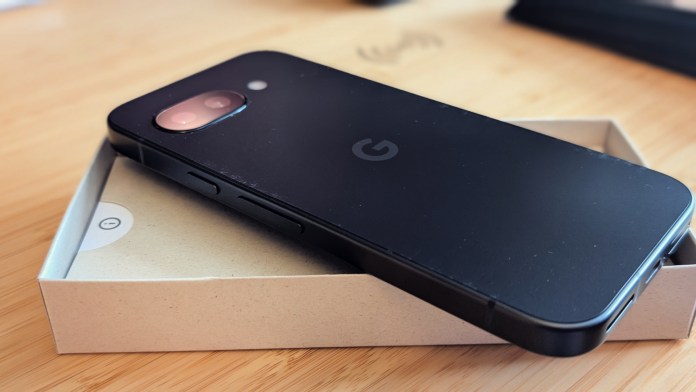
Where things get a little murky is the AI feature set. While you do get many of Google’s signature tools (Magic Eraser, Best Take, Recorder, Call Screen), some newer or more memory-intensive ones like Pixel Screenshots and Call Notes are missing. This isn’t because of the chip, but likely because of the RAM ceiling. It’s a conscious decision by Google to segment the product line, and it might irk power users who want the full suite.
Then again, Google consistently finds a way to offer more features and services to devices that previously did not have them. Whether through an app update, Pixel drop, or a new version of Android, I wouldn’t be surprised of Google sprinkles new capabilities into the 9A.
Thermals are under control from what I could tell. I didn’t notice any throttling during heavy use or when sampling various games, and the phone stayed cool even while streaming video and using the camera for extended periods. It also seems to handle 5G and Wi-Fi 6 like a champ, keeping steady connections and fast speeds.
Cameras: Pixel Magic Still Intact
If there’s one thing the Pixel 9A doesn’t compromise on, it’s camera quality. The 48MP main sensor produces consistently sharp, vibrant, and well-balanced photos. Google’s image processing is still among the best in the game, especially when it comes to portraits, night shots, and tricky lighting situations.
For the better part of a decade now I’ve been extolling the virtues of the Pixel line of phones and their cameras. Even the A-series, and its “watered down” approach, is still among the best and more user friendly when it comes to the point and shoot camera experience.
The 13MP ultrawide is a solid performer too, though not quite as detailed. It’s great for landscapes or squeezing more into the frame, but it can get a little soft around the edges. Super Res Zoom lets you push up to 8x with surprisingly usable results.
Macro Focus is another highlight. It activates automatically when you get close to a subject, and the detail you can capture is impressive. Flowers, textures, and food shots all come out looking rich and crisp.
I love playing with the various cameras and getting to learn the capabilities of each, and thanks to the app on Pixel phones, I don’t feel like I need to take a college course to fully understand what’s at my disposal.
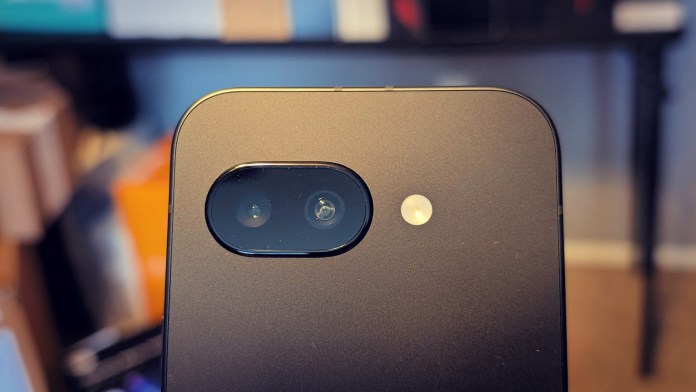
On the video side, you can shoot 4K at 60fps from the rear and 4K at 30fps on the front. Stabilization is solid, and features like Audio Magic Eraser and Cinematic Pan add creative flair. It’s not going to replace a dedicated camera, but for social sharing and family videos, it does just fine. Start snapping pics with a portrait mode or let Google Photos retouch things a bit and you’ll find friends and family start delegating you as the picture taker for events.
Battery: A Standout Performer
Battery life is arguably the Pixel 9A’s biggest strength. With a 5,100mAh battery inside, it routinely lasts well beyond a full day. I’ve ended several days with 30-40% remaining, even with moderate to heavy use. In fact, it’s the A-series of phones that changed my charging habits.
On lighter days, I could stretch it into a second day without reaching for the charger. The adaptive battery learns your habits over time, and features like Extreme Battery Saver can push uptime to nearly four days if needed.
Whereas I used to plug my phone in at night out of habit, I no longer have to bother. There’s more juice left in my battery at bedtime than I’ll need for the first half of the following day. And that’s not to consider I can put in on a charger over coffee and breakfast and be just about ready for a full day out.
You’re capped at 23W wired and 7.5W wireless, which isn’t slow exactly, but it does lag behind some of the competition. That said, it’s still pretty good when you consider that you’re rarely starting at zero.
Software and Longevity: 7 Years of Support
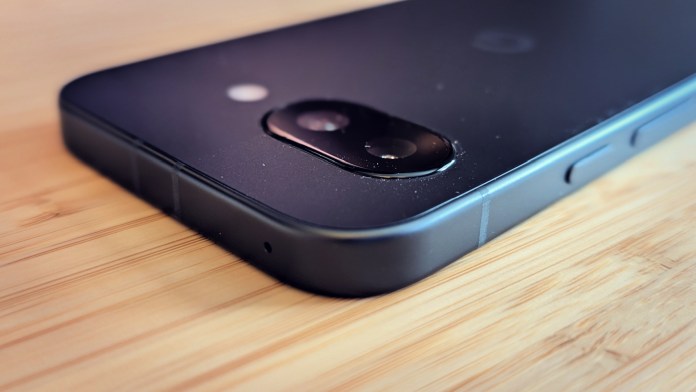
The Pixel 9A ships with Android 15 and Google’s signature clean UI. No bloat, no gimmicks. It’s just a fast, responsive, and thoughtfully designed OS. You get all the signature Pixel touches, from Now Playing and Live Caption to At a Glance widgets and robust digital wellbeing tools. And as of today, you can already officially install Android 16.
What sets the phone apart from most mid-rangers is the support policy. Google promises seven years of OS and security updates, plus the aforementioned Pixel Drops that bring new features. That means you’re looking at updates through 2032, which is a level of longevity that rivals even Apple.
Ask yourself if you’ve ever owned a phone for that long. Do you plan to sit on one for seven years? It’s largely lip service, in my opinion, when we start talking about more than 2-3 years. But, to be fair, consumer sentiments have changed, tariffs are a real thing to think about, and we do seem to be holding onto things longer. No matter how things shake out for you over the next few years, just know that you’ll be first in line to get the latest in Android.
With rock-solid performance and seven years of updates, the Pixel 9A delivers long-term peace of mind at a price that feels almost too reasonable.
Gemini AI is baked into the experience, though it’s not everyone’s favorite. It can sometimes feel like a work in progress, especially compared to the simplicity of the old Google Assistant.
If I am being honest, I’ve slowly warmed to Gemini over the last year and see it as a viable alternative to ChatGPT for my needs. I play more with the API now and have scripts for various Google Workspace apps so I’m falling more in love with it every few months. So, the more it integrates with my daily apps and features, the better. Magic Editor, image generation, and context-aware search are undeniably impressive and it all feels nice on a Pixel 9A.
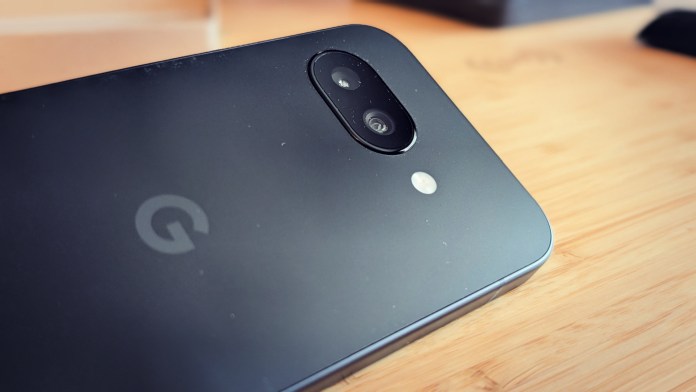
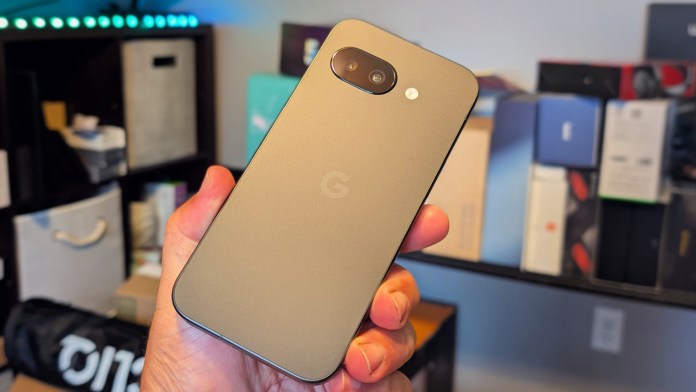
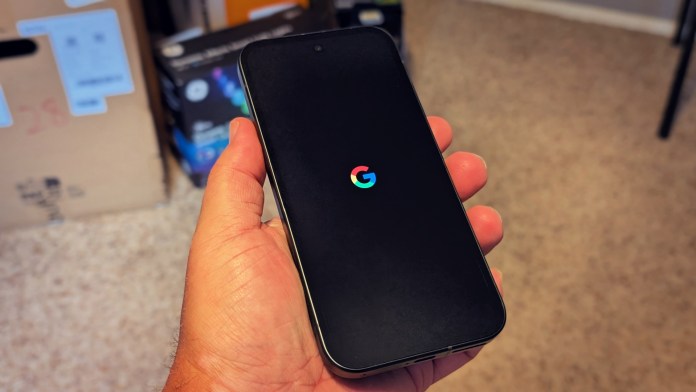
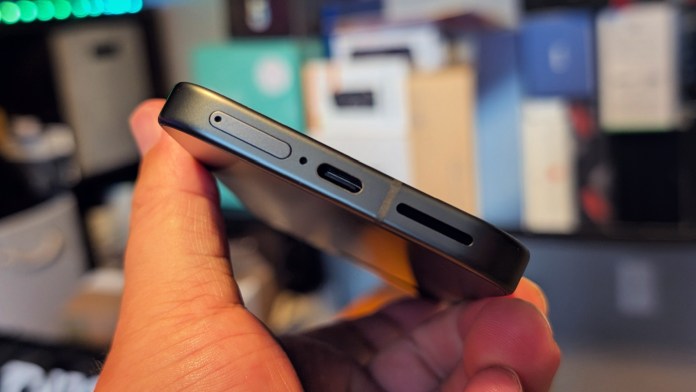
Parting Thoughts
The Pixel 9A is perfect for anyone who wants a phone that just works. As I hinted at above, it’s pretty much the first phone I’ll recommend to anyone looking for a new phone. Nobody I know needs a high-end device, but it would be nice to own one, right? The A-series, and more specifically the 9A, represent a lot of top-notch capability and features. Most people would have a tough time justifying a few hundred dollars more for things that often just pan out to be “more storage and another camera.”

Awarded to products with an average rating of 3.75 stars or higher, the AndroidGuys Smart Pick recognizes a balance of quality, performance, and value. It stands out in design, innovation, and user experience, delivering great functionality at a competitive price.
At the end of the day, the Pixel 9A isn’t trying to be everything to everyone, and I think that’s why it works. It sticks to what matters: a stellar camera, outstanding battery life, smart software that gets better over time, and an experience that feels familiar in all the right ways. It’s not overstuffed with gimmicks, it’s not chasing specs for bragging rights, and it doesn’t pretend to be a luxury phone dressed up in glass and chrome. And best of all, it keeps a few hundreds bucks in your pocket.
Instead, it’s consistent. Confident. Capable. The kind of phone I can hand to a friend, a parent, a college-bound teen, or someone upgrading after four years and know that it’s going to do what they need. Every day, without fuss.
Could it charge faster? Sure. Would I like tougher glass? Who wouldn’t? But in the big scheme of everyday life, these things barely register. What sticks with me is how reliable and enjoyable this phone is to use. I don’t have to overthink it. And once I stop being critical just for the sake of reviewing, I forget where it even “fell short” in the first place.
If you’re looking for a phone that nails the fundamentals, keeps things simple, and quietly outperforms expectations, the Pixel 9A is it. It may not turn heads, but if it’s like any other Pixel A phones I’ve had, it’ll absolutely earn your trust and turn you into a Google fan.
